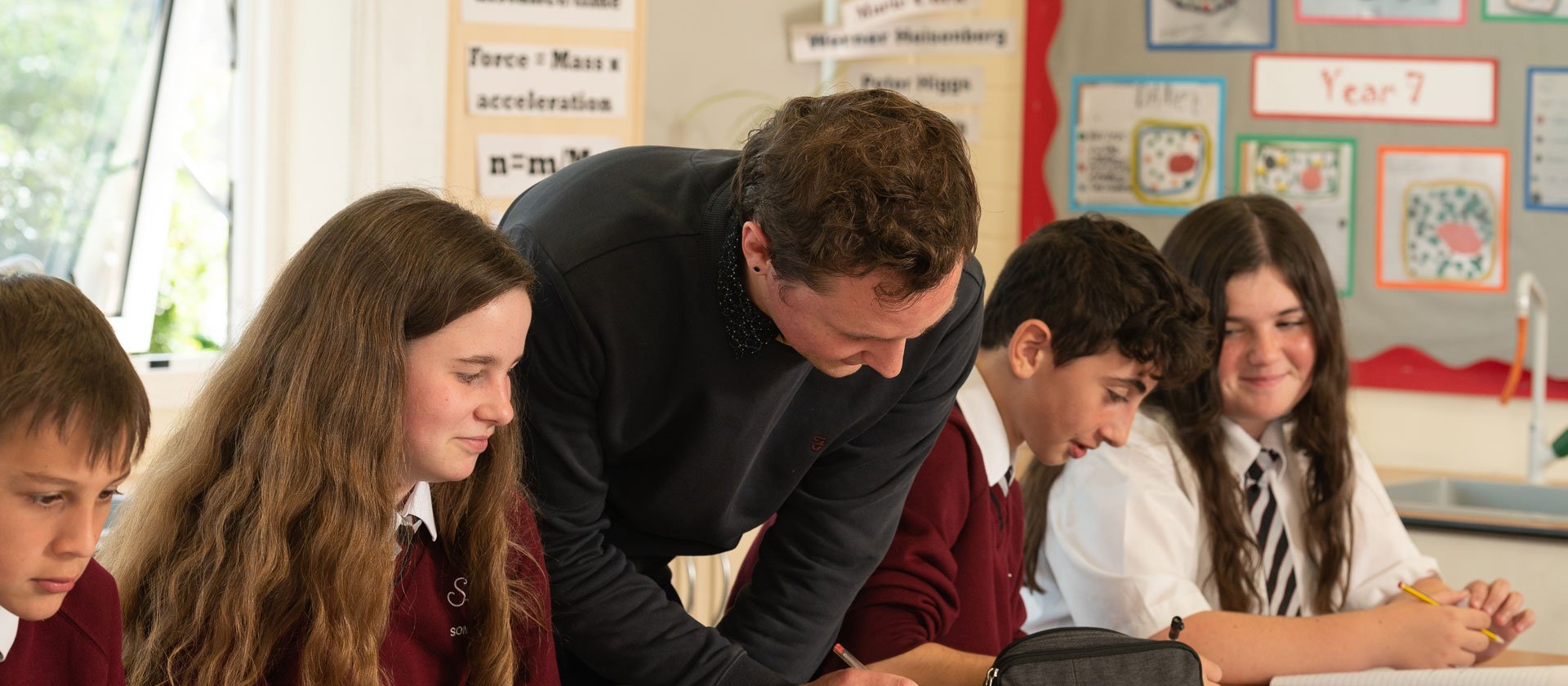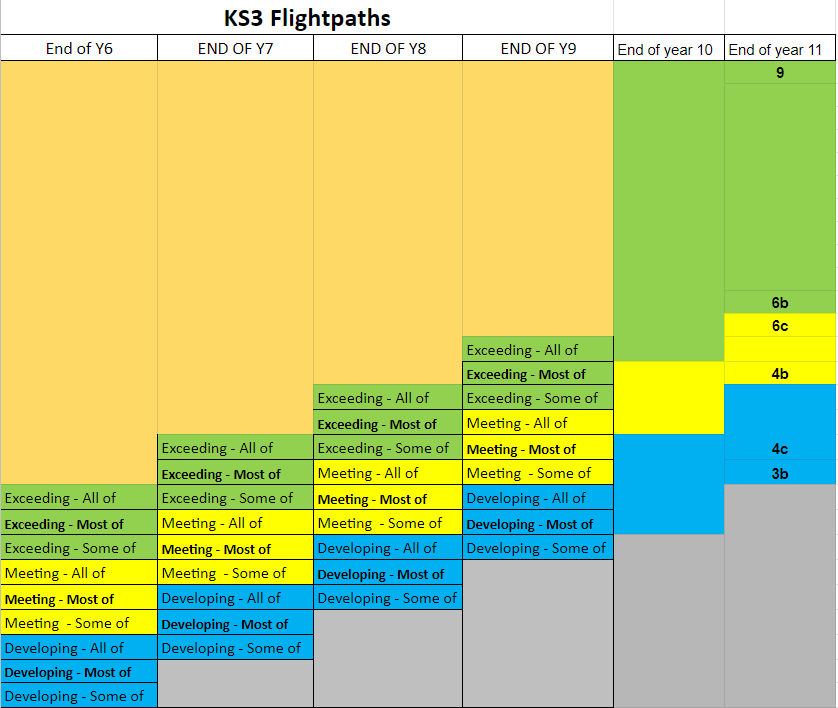
KS3 Assessment and target setting (Years 7, 8 and 9)
All students at KS3 are placed on ‘flight paths’. This means that the work they will cover will increase in challenge as they move through Key Stage 3. To stay on their flight path they will be expected to meet these increased challenges.
There are three flight paths:
Further information on how we place students on flight paths, the target they receive, and the language of assessments, is shown below.
What are ‘flight paths’?
A ‘flight path’ is an estimation of the progress students should be making across Key Stage 3, leading to successful outcomes at Key Stage 4.
Every student will be placed on a flightpath when they join the school, based on the following information:
Students are expected to work at the level of their flight path, as a minimum.
Staying on the same flight path means that students are showing very good progress in their work. Therefore, if students are to stay on their flight path through 7, 8 and 9, the knowledge and skills that students are expected to attain will need to increase. Simply put, the work becomes more challenging as students’ progress - so staying on their flight path shows that they are managing this extra challenge, and should be celebrated for it.
Students will experience a range of assessments during each term. These include:
Students will receive a grade in the form of the ‘Flight path’ language, shown below. This will clearly show students if they are making the expected progress, at any point in the term.

The language used above is an abbreviation. It shows where they are in achieving the knowledge and skills expected for this stage of their year.
We have established what we expect to be an Age Related Expectation, or standard for each Year group, based on linking the expected standard from KS2 of around a 100 on the scaled scores, to the expected standard at GCSE of a strong pass, of a grade 5.
Example:
A student enters Somervale School in Year 7 with clear evidence from their primary school that they are ‘meeting’ Age Related Expectations, based on achieving around a 100 in English and Maths.
They are placed on the ‘Meeting’ flight path.
A Target for the End of Year 9 is created for them: Meeting Most of the knowledge and skills expected for Year 9
In their assessments throughout Years 7, 8 and 9, it will be expected that their results stay within the ‘Meeting’ flightpath, as a minimum, and that their grades are at least ‘Meeting most of’.
If they continue to achieve grades of at least ‘Meeting most of’, then they are making very good progress.
Students who are below 94 as a KS2 scaled score are likely to be placed on the ‘Developing towards’ flight path.
Students who are above 105 as a KS2 scaled score are likely to be placed on the ‘Exceeding’ flight path.